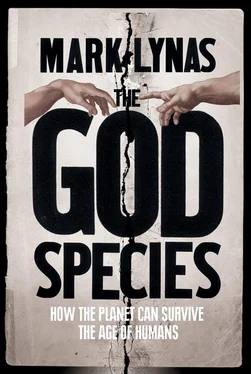1 ...7 8 9 11 12 13 ...29 Even emblematic species like the tiger have their backs to the wall. Globally, only about 3,500 wild tigers remain – an extraordinary statistic given the charisma and recognition factor of this species, whose form has been emblazoned on everything from cereal packets to petrol stations. Three subspecies, the Bali, Caspian and Javan tigers, are already extinct; the South China tiger has probably joined them, for no one has seen it in the wild for 25 years. 5 Конец ознакомительного фрагмента. Текст предоставлен ООО «ЛитРес». Прочитайте эту книгу целиком, купив полную легальную версию на ЛитРес. Безопасно оплатить книгу можно банковской картой Visa, MasterCard, Maestro, со счета мобильного телефона, с платежного терминала, в салоне МТС или Связной, через PayPal, WebMoney, Яндекс.Деньги, QIWI Кошелек, бонусными картами или другим удобным Вам способом.
According to a late-2010 study, the decline in tiger numbers ‘has continued unabated’ for the last two decades: only 1,000 breeding females now survive, over less than 7 per cent of their historical range. Several Indian so-called ‘tiger reserves’ no longer have any tigers in them at all. Yet saving the tiger could cost as little as $82 million per year, according to one estimate – this is all it would take to protect the remaining 42 sites around Asia where viable tiger populations remain. 6 Конец ознакомительного фрагмента. Текст предоставлен ООО «ЛитРес». Прочитайте эту книгу целиком, купив полную легальную версию на ЛитРес. Безопасно оплатить книгу можно банковской картой Visa, MasterCard, Maestro, со счета мобильного телефона, с платежного терминала, в салоне МТС или Связной, через PayPal, WebMoney, Яндекс.Деньги, QIWI Кошелек, бонусными картами или другим удобным Вам способом.
All that is needed is a mechanism to raise the funds and an implementation plan to safeguard the reserves.
Particularly badly hit by our success have been our nearest relatives, the great apes. All are threatened with extinction in the wild. In Asia the orang-utan – once common from South China to the Himalayas – is now reduced to a remnant of between 45,000 and 69,000 individuals, mostly in the sort of lowland forests in Borneo that seem to be particularly irresistible to oil-palm plantation owners. In Africa the famous ‘gorillas in the mist’ of Virunga National Park in the Congo are down to about 380 individuals, under siege by marauding rebels as well as by poachers and bushmeat hunters. To put humans in our proper context, try entering ‘great apes’ into a www.iucnredlist.org (a website run by the International Union for the Conservation of Nature, featuring its Red List of endangered species) search. When I tried, the results were as follows:
Gorilla beringei (Eastern Gorilla) – Status: Endangered, Pop. trend: decreasing.
Gorilla gorilla (Lowland Gorilla) – Status: Critically Endangered, Pop. trend: decreasing.
Homo sapiens (Human) – Status: Least Concern, Pop. trend: increasing.
Pan paniscus (Gracile Chimpanzee) – Status: Endangered, Pop. trend: decreasing.
Pan troglodytes (Common Chimpanzee) – Status: Endangered, Pop. trend: decreasing.
Pongo abelii (Sumatran Orang-utan) – Status: Critically Endangered, Pop. trend: decreasing
Pongo pygmaeus (Bornean Orang-utan) – Status: Endangered, Pop. trend: decreasing
As this list shows, we are just apes. But with our newfound global power comes a responsibility for proper global stewardship. This is a new task for humans to take on, certainly at a planetary level. But the time for this shift is long overdue, for a brief review of our history to date shows us in a very singular role: that of serial killers.
THE PLEISTOCENE OVERKILL
Many thousands of years ago a dramatic ecological calamity began to sweep through the fauna that inhabited the Earth’s disparate continents. Australia lost most of its large animals first, about 46,000 years ago. North and South America saw a similar extinction wave 13,000 years ago. New Zealand, meanwhile, kept hold of its big-bodied animals until a mere 700 years ago. What happened at each of these points in time? Did the climate perhaps change, leaving large animals stranded? Unlikely: there is no correlation between global climate change and the various extinction pulses. Did a meteor strike or a volcano blow? Again, there is no way to pin all of these different calamities, taking place at very different times, on a single geological event. Indeed, the true nature of this extinction calamity is much more familiar. It came on two legs, for a start. What links these points in time is simple: they mark the moment when humans arrived.
Modern humans have at least dealt out death fairly: we began our existence by killing each other. In what looks like a prehistoric bout of all-too-modern ethnic cleansing, Homo sapiens probably drove its closest hominid relatives, Homo neanderthalensis and Homo erectus , to oblivion. A minority of archaeologists cling to the notion that some interbreeding must have taken place, but genetic studies show this is unlikely. 7 Конец ознакомительного фрагмента. Текст предоставлен ООО «ЛитРес». Прочитайте эту книгу целиком, купив полную легальную версию на ЛитРес. Безопасно оплатить книгу можно банковской картой Visa, MasterCard, Maestro, со счета мобильного телефона, с платежного терминала, в салоне МТС или Связной, через PayPal, WebMoney, Яндекс.Деньги, QIWI Кошелек, бонусными картами или другим удобным Вам способом.
Modern human DNA instead confirms that all of us are descended from the same small initial Homo sapiens population that migrated out of Africa 50,000 years ago. 8 Конец ознакомительного фрагмента. Текст предоставлен ООО «ЛитРес». Прочитайте эту книгу целиком, купив полную легальную версию на ЛитРес. Безопасно оплатить книгу можно банковской картой Visa, MasterCard, Maestro, со счета мобильного телефона, с платежного терминала, в салоне МТС или Связной, через PayPal, WebMoney, Яндекс.Деньги, QIWI Кошелек, бонусными картами или другим удобным Вам способом.
The last Neanderthals hung on in remote mountainous parts of France until 38,000 years ago, and in southern Spain until about 30,000 years ago. The very last families died a few thousand years later in Gorham’s Cave in what is now Gibraltar, when their final refuge on the extreme southern edge of the continent was overrun. 9 Конец ознакомительного фрагмента. Текст предоставлен ООО «ЛитРес». Прочитайте эту книгу целиком, купив полную легальную версию на ЛитРес. Безопасно оплатить книгу можно банковской картой Visa, MasterCard, Maestro, со счета мобильного телефона, с платежного терминала, в салоне МТС или Связной, через PayPal, WebMoney, Яндекс.Деньги, QIWI Кошелек, бонусными картами или другим удобным Вам способом.
Officially, the direct cause of their ultimate demise is a mystery, but I think we can guess who the culprit was.
Читать дальше











